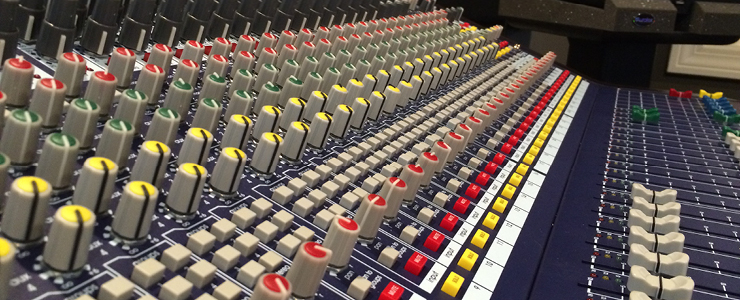
After properly recording a performance, mixing brings out the best in the tracks. Mixes can be simple and clear, with restrained application of EQ, compression and reverb, or elaborate endeavors filled with nuance. Either way the results are clear and dynamic.
My preferred method of mixing starts unattended with what I call a “three-quarters mix”. In short, I mix one song to about 3/4 completion, then send files to the clients for feedback. If I’ve done my job right, the feedback is usually personal taste requests like “more low end on the kick” or “less reverb”, things like that. From there I make requested updates, and use the first song as a sonic template to proceed on the rest of the songs.
Towards the end of the process, clients often like to come in for a final review and tweaks. Judicious “car testing” is also involved. The project is finally considered mixed when everyone is happy.
While I do use my Midas recording console for it’s great sound and analog summing, most of my mixing occurs “in the box”. In the box mixing has instant recall and permits clients to take their time evaluating mixes. This is a big upside over the old days when a song needed to be mixed, tweaked and approved before moving on to the next song. Mix updates days or even months later were incredibly time consuming (if doable at all), as the console and all the analog gear needed to be reset to the best of the engineer’s notes and recollections.



 “Rowan’s passion for engineering a high quality product is obvious. His knowledge and wisdom played a fantastic role in the outcome of our experience at Garage Mahal. I’d highly recommend this studio to any musician looking for a serious yet enjoyable recording experience.”
“Rowan’s passion for engineering a high quality product is obvious. His knowledge and wisdom played a fantastic role in the outcome of our experience at Garage Mahal. I’d highly recommend this studio to any musician looking for a serious yet enjoyable recording experience.”